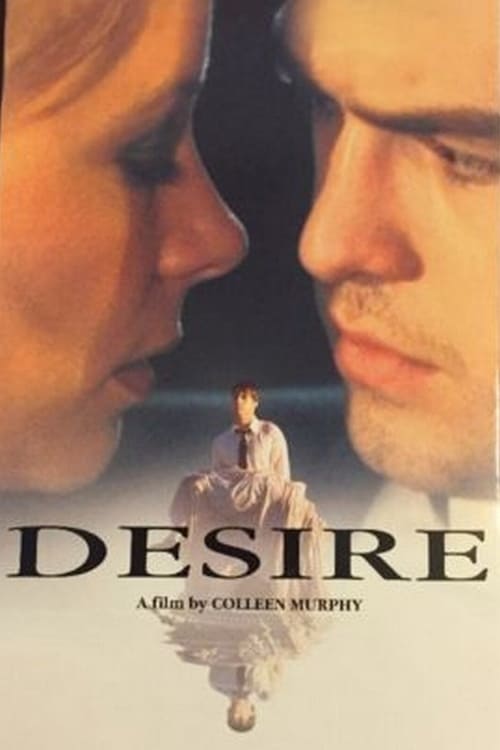What ignites the human spirit and drives us to seek, to yearn, to desire? The cinematic exploration of "desire" in all its multifaceted forms has captivated audiences for generations, offering a mirror to our innermost selves and a window into the human condition.
The search results speak volumes: 633 movie listings are specifically tagged with "desire," a testament to its enduring power as a theme in filmmaking. From the raw and challenging to the subtly nuanced, the silver screen has perpetually grappled with the complexities of longing, lust, and ambition. The quest to understand and portray this most fundamental of human emotions has yielded some of the most iconic and enduring films ever made. We find ourselves drawn to stories that probe the depths of our yearnings, holding a magnifying glass to the secret language of the heart and the often-unspoken cravings that shape our lives.
| Movie Title | Director | Year | Genre | Key Themes |
|---|---|---|---|---|
| Nymphomaniac | Lars von Trier | 2013 | Drama, Erotic | Sexuality, Desire, Addiction, Self-Destruction |
| All I Desire | Douglas Sirk | 1953 | Drama | Family, Longing, Second Chances, Societal Expectations |
| Belle de Jour | Luis Buuel | 1967 | Drama | Fantasy, Repression, Forbidden Desire, Identity |
| The Piano | Jane Campion | 1993 | Drama, Romance | Forbidden Love, Communication, Female Empowerment, Expression |
| In the Mood for Love | Wong Kar-wai | 2000 | Romance, Drama | Unspoken Feelings, Restraint, Yearning, Lost Opportunities |
| The Postman Always Rings Twice | Tay Garnett | 1946 | Crime, Film-Noir, Drama | Adultery, Deceit, Passion, Fatalism |
| A Streetcar Named Desire | Elia Kazan | 1951 | Drama | Desire, Madness, Social Class, Illusion |
Source: IMDB
Consider Lars von Trier's Nymphomaniac, a film that fearlessly delves into the world of sexuality and desire. This is not a movie to be watched lightly, it's not easy viewing, as it is a raw and unflinching portrayal of one womans erotic journey, as the content above states. The film is intense and challenging, provoking conversation and confronting the viewer with its unflinching realism. It explores the darker, more complex facets of desire, examining the power dynamics, the consequences, and the emotional toll that such a life can exact.
Then there is the classic All I Desire, a 1953 American drama directed by Douglas Sirk, starring Barbara Stanwyck. This film, based on Carol Ryrie Brink's 1951 novel Stopover, examines themes of family, societal expectations, and the yearning for something more. The film's title itself speaks to the central theme, encapsulating the longing that drives the narrative.
The story takes place in a world that is far from our own and is about how a woman named Naomi Murdoch returns to her family after many years away. The tale explores themes of longing, regret, and the complicated nature of family dynamics. The film is a complex exploration of the human heart, its desires, and the lengths to which we will go to fulfill them.
In a completely different vein, but equally resonant, is Wong Kar-wais In the Mood for Love. Set in 1960s Hong Kong, this film is a masterclass in unspoken desire and longing. The film portrays a situation in which two neighbors, who suspect their spouses of infidelity, find themselves drawn to each other. The film is a visual poem about the unspoken nature of human connection and the complexities of desire. The restraint, the subtle glances, the shared moments all contribute to a palpable tension that builds throughout the film, creating a lingering sense of yearning.
Another exploration into hidden longings, Belle de Jour, directed by Luis Buuel, offers a unique perspective on desire and identity. This film tells the story of a young, beautiful housewife who begins working as a part-time prostitute. Through this narrative, Buuel explores themes of repression, fantasy, and the search for self. The film is a striking example of how desire can lead to surprising places and how the constraints of societal expectations can shape our internal worlds.
Beyond these specific examples, the broader landscape of desire movies provides a fascinating array of perspectives. The search results on sites like Moviefone reveal a vast library of films, each offering a unique lens through which to examine this fundamental human experience. They reveal the enduring appeal of stories that tackle the complexities of the heart. The desire to connect, the ache of longing, the thrill of the forbidden these are the elements that fuel some of the most memorable moments in cinematic history.
The presence of websites that provide access to movies with subtitles for both Hollywood and Bollywood films demonstrates the global appeal of these stories. These sources, while often presenting the legal complexities of copyright, reflect the widespread demand for access to these narratives. The desire to watch these movies, in high definition (1080p) or lower qualities (480p), speaks to a deep appreciation for the power of cinema to reflect our shared human experience. It signifies a desire for stories that mirror our own internal worlds, allowing us to see ourselves and our yearnings reflected on screen.
The very language used to describe these films reveals the intensity of the topic. Words like "provocative," "raw," "intense," and "challenging" are frequently used, underscoring the often-uncomfortable truths that these films explore. They remind us that desire is not always pretty, that it can be fraught with complications and consequences. But they also show us the beauty and power that can be found within these emotions.
The longevity of "desire" as a cinematic theme underscores its timelessness. Films about desire continue to be made, with many of them tagged for easy search and viewing. They continue to attract both audiences and critical attention. These movies are a testament to the enduring power of these stories, and to our unwavering fascination with the intricacies of the human heart.
The movies often explore the societal and personal consequences of desire. All I Desire does so in its exploration of family dynamics and the weight of past choices. Nymphomaniac ventures into the more challenging terrain of exploring the consequences of unchecked urges. These films make us question our own values and consider the implications of our actions. They confront us with difficult truths and challenge us to confront our own desires and impulses.
The rise of streaming services and online movie databases, combined with the widespread availability of subtitled movies, only underscores the enduring power of these themes. As the world becomes more interconnected, so too does the demand for stories that speak to universal human experiences. The ability to easily find and watch these films, often from a variety of global locations, guarantees a wider reach and encourages deeper engagement with the emotional landscapes presented.
The fact that these films inspire such searching interest is another key point. The movies that center around the theme of desire can be highly impactful on viewers. The sheer number of views, the active discussion in forums, and the ongoing searches for these films reveal the depth of its resonance. The viewer actively engages with the content, which causes the movies to have an even deeper impact.
Even the technical details, like the creation date and modification date, are telling. The fact that these articles and searches are still being updated indicates the ongoing relevance of these topics. The enduring appeal of these films ensures that they continue to evolve and grow. They continue to capture new viewers, sparking new conversations and fresh interpretations of themes that have captivated audiences for decades.
The availability of resources, like the ability to browse desire movies and tv shows on Moviefone, further demonstrates the active pursuit of this theme. Moviegoers want a way to explore these themes, from the intense and explicit to the subtle and suggestive. This desire is reflected in the various means available to explore and engage with the subject matter.
In conclusion, the ongoing exploration of desire in cinema offers a rich tapestry of stories that mirrors the complexities of the human experience. The films, the language used to describe them, and the ways in which they are accessed all point to the enduring power of these themes. The films challenge us, move us, and make us consider our own yearnings. Through the lens of these films, we see ourselves reflected, in all our beauty, our flaws, and our insatiable desire to connect and find meaning in the world.


